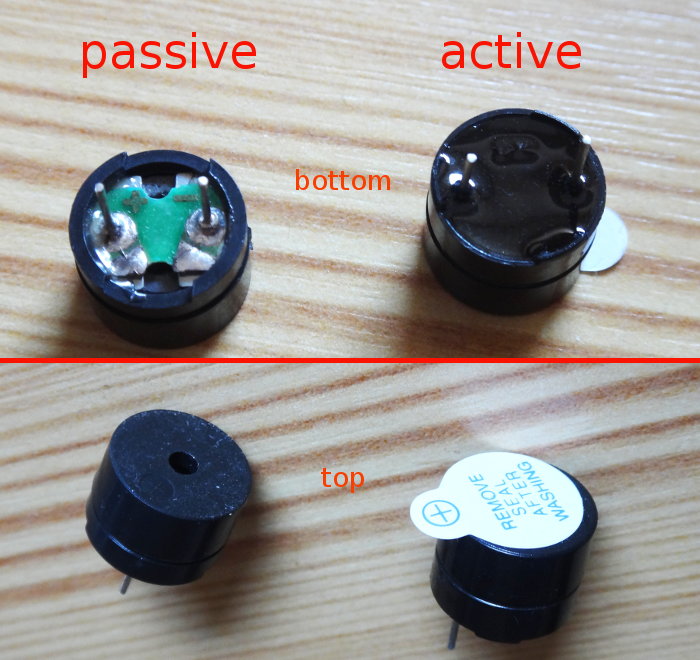Jul 21
Active vs. Passive Buzzer
So you've just received your Arduino Starter Kit, or begin tinkering with electronics in general. One thing that might come up is that a circuit requires you to add a piezo buzzer or micro speaker. And it has to be a passive one. What's that, a passive buzzer. What's the difference to an active buzzer? And in your kit, there are two buzzers, nearly identical looking! Here's how to differentiate between them:
On the left side in the picture above is a passive buzzer. The bottom looks less refined, with the PCB showing, no sealing. The passive buzzer is the simpler piece of both. You apply a voltage and that directly controls the little piezo element. Modulate the voltage and you get a sound.
On the right side is the active buzzer. It has the modulation circuitry built-in. So you only have to apply a current and it will emit a buzz. In many cases, with these common Starter Kits, the active buzzer still carries this white sticker, stating "Remove Seal After Washing".
Usually, you'd use the passive buzzer in Arduino / ESP8266 circuits, where the microcontroller produces a PWM current, that way controlling the frequency of the played sound.
Related reading and experimentation: You might like to read my follow-up post Buzzer and OLED display on a NodeMCU microcontroller to see how you can buzz simple sounds with such a speaker.

